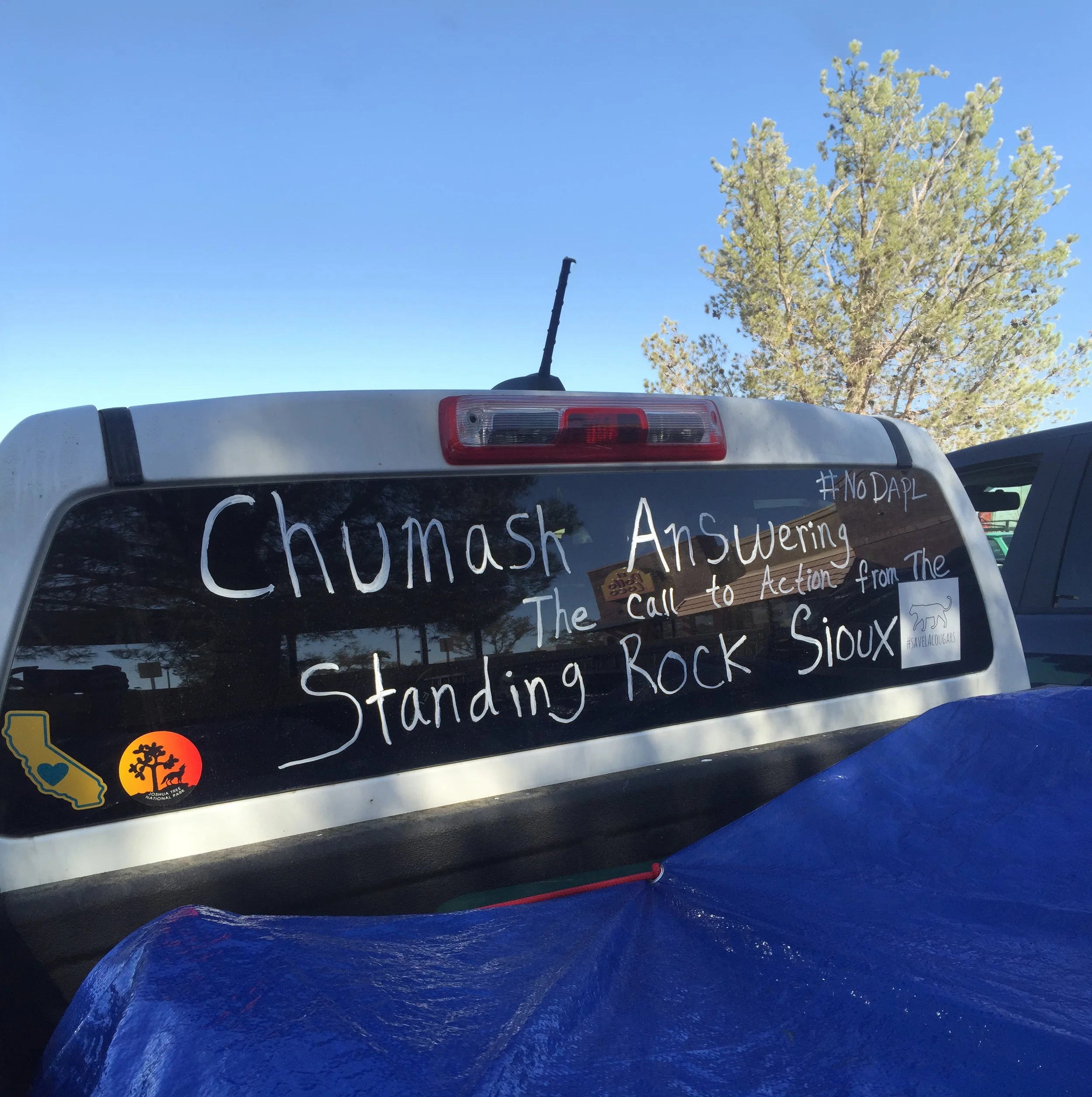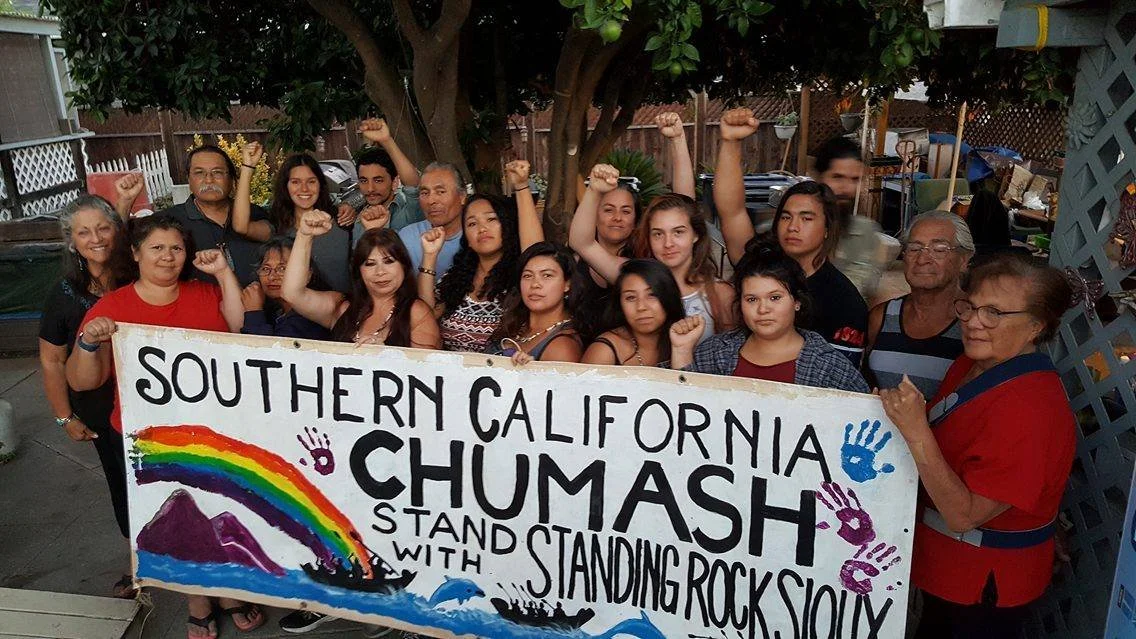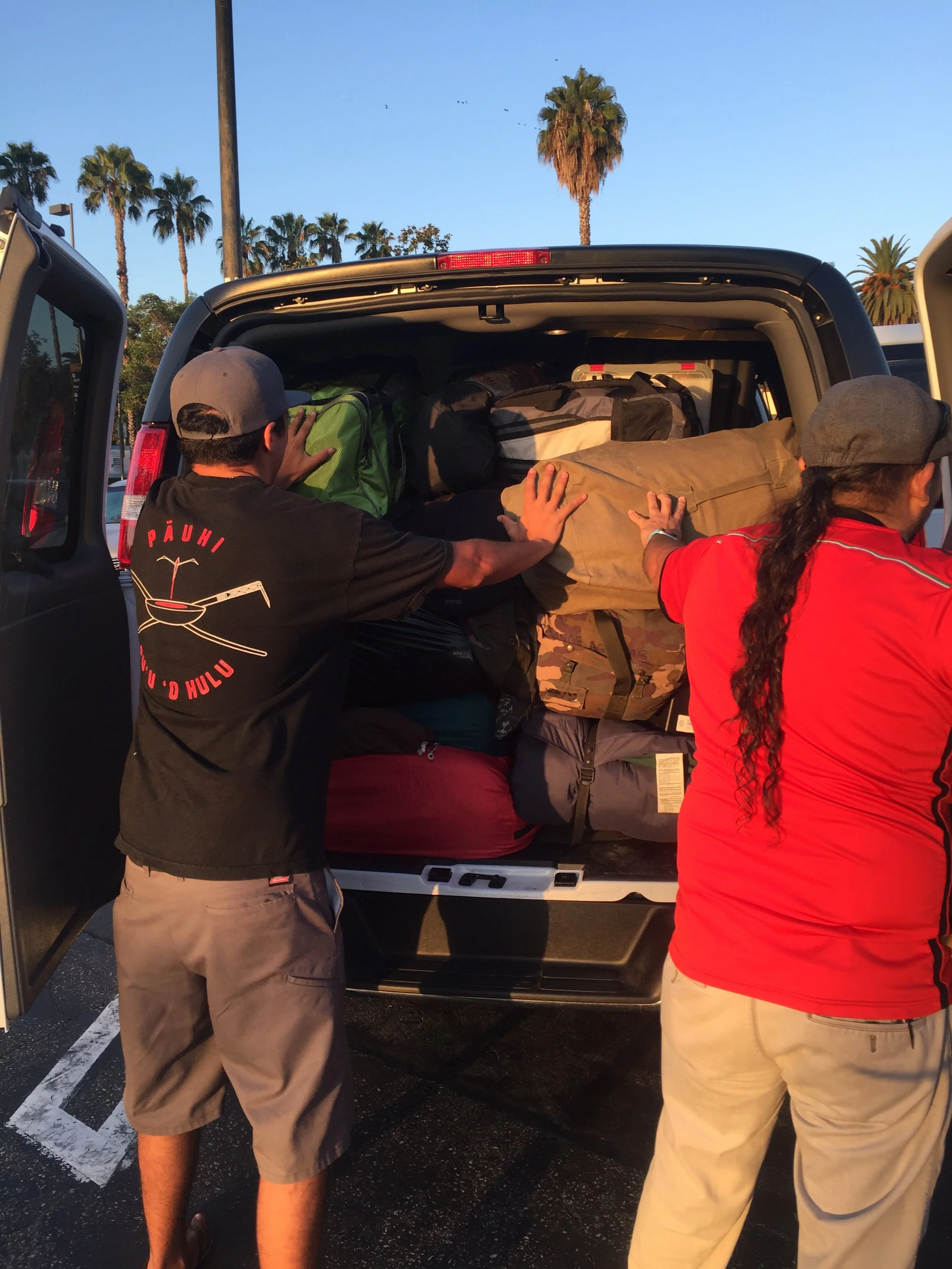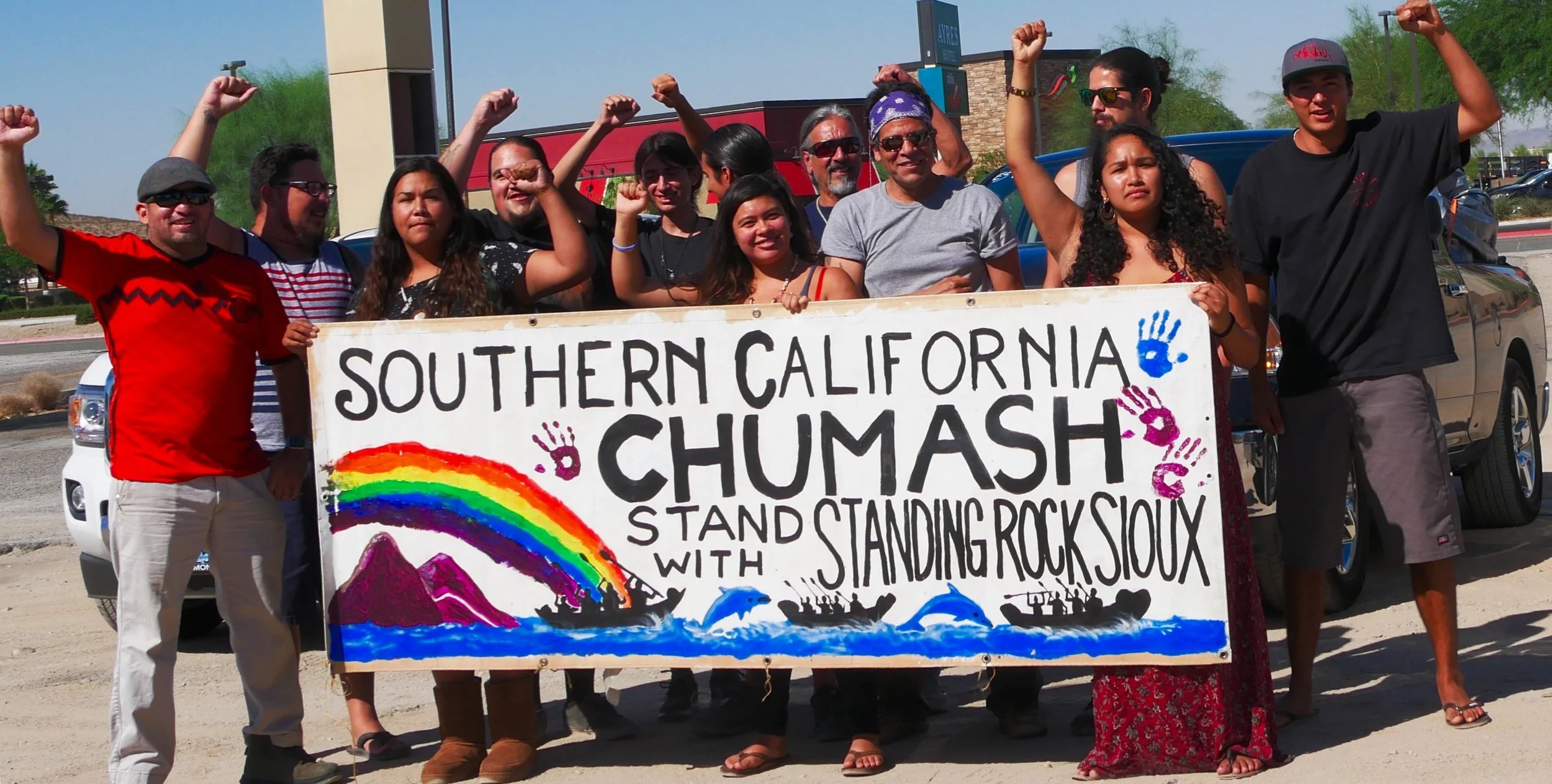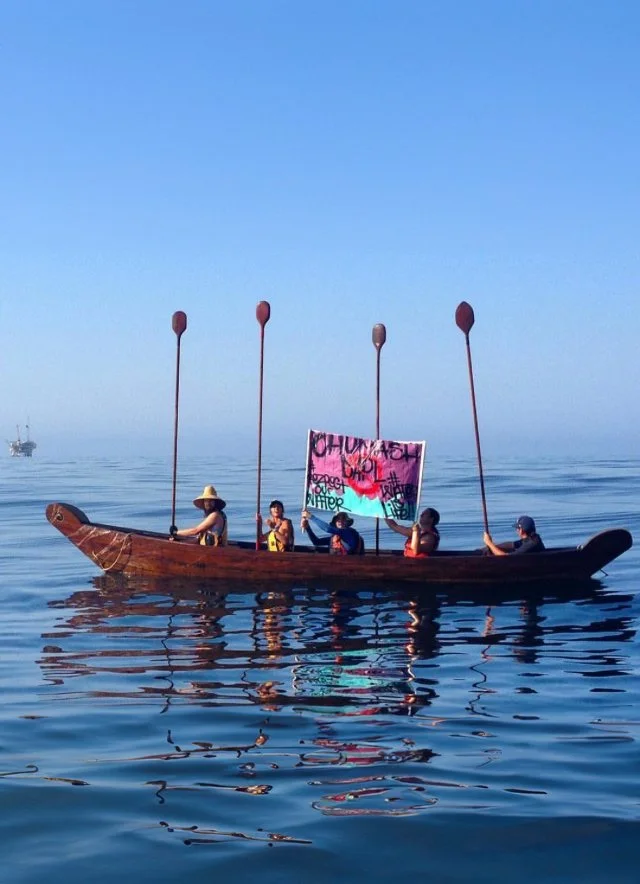Standing Rock: A Legacy of Chumash Activism
For our young Chumash water protectors, the journey to North Dakota represented more than a single moment of resistance—it was the continuation of a proud legacy. We had grown up on powerful stories told around evening fires—stories of our parents and grandparents who had answered similar calls to action decades before.
When the American Indian Movement (AIM) emerged in 1968 in Minneapolis, it sparked a nationwide awakening that reached all the way to California's Central Coast. Our Coastal Band found new strength and crucial allies during this transformative period. Our elders still speak of the determination that drove them to join the 19-month Occupation of Alcatraz Island (1969–71), standing alongside Indigenous activists from across the country who reclaimed the abandoned federal property as "Indian Land."
Just two years later, many of those same Chumash activists traveled to South Dakota to support the Wounded Knee Occupation of 1973, where AIM leaders and Oglala Lakota stood against tribal government corruption and harmful federal policies. The 71-day siege became a defining moment in modern Indigenous resistance—and the Chumash were there, contributing supplies, manpower, prayers, and solidarity. These stories were passed down through generations, and supporting other tribes became part of our identity.
So when the call came from Standing Rock Sioux Territory in 2016, the Wishtoyo Chumash Foundation sponsored two contingents of youth and elder on a journey to North Dakota, continuing a tradition of Chumash participation in pivotal moments of Indigenous resistance. Back home, our families gathered in public to support Standing Rock—singing, speaking, and dancing on behalf of the people in South Dakota.


